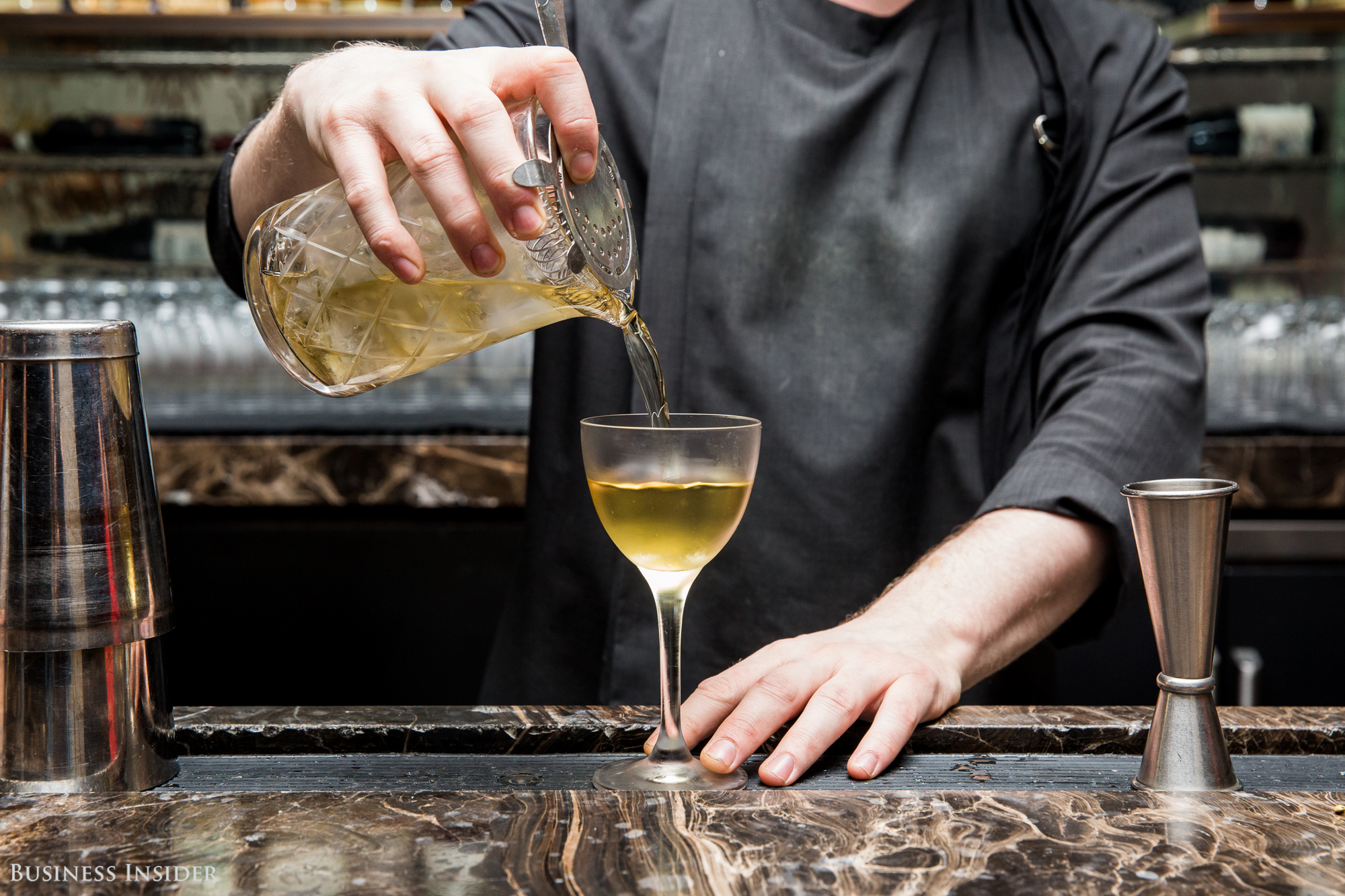Today is National Martini Day in the US. In celebration, we deep dive into the somewhat murky mystery of the drink’s origin.
Competing stories surrounding the martini’s origin come from both the East and West Coast of the US. Despite the cocktail’s recipe being documented in the 1880s in Harry Johnson’s “Bartender’s Manual” (the first guide to the bartending trade), there’s still some debate as to where it came from.
Its West Coast origins involve stories of gold miners going to the bar after striking it rich. On the East Coast, however, its rumored origin story takes place in the heart of New York City and involves the wealthy Astor and Rockefeller families.
The storied birthplace of the martini is The Knickerbocker Hotel, which was opened by John Jacob Astor IV in 1906, in New York City’s Times Square. Back then, rooms averaged around $3.25 per night, and writers like F. Scott Fitzgerald and George M. Cohan were frequent guests.

Guests would enter the Knickerbocker's speakeasy via a door located underground in the Times Square shuttle stop. The door, though no longer functional, can still be seen in the Times Square station today. Once they entered, they'd see bartenders who were busy serving a roster of guests that included oil tycoon and millionaire John D. Rockefeller.
It was Rockefeller who was supposedly served an eponymous cocktail by then-bartender Martini di Arma di Taggia. Made with gin, dry vermouth, sweet vermouth, citrus bitters, orange bitters, and garnished with a lemon twist, the original martini recipe is still served at the new bar inside the recently reopened and landmarked Knickerbocker Hotel today.

While Astor died in the sinking of the Titanic in 1912, the Knickerbocker Hotel didn't close until 1921, and the building went through several renovations, including a stint as the Newsweek Building in the '40s and '50s.
The hotel reopened as the Knickerbocker Hotel in 2015, after a $250 million renovation, according to a spokesperson.

